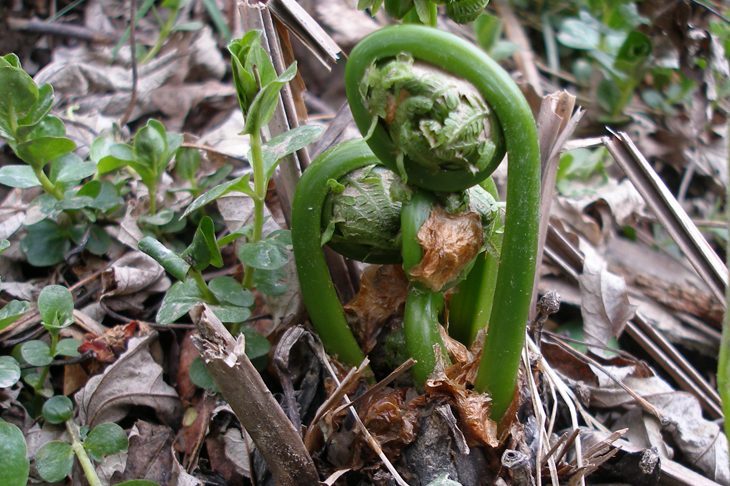
Effects of Cook Method and Time on the Safety and Quality of Maine Fiddleheads
Two studies were conducted to investigate the microbial characteristics of raw fiddleheads to determine if microbial levels and heavy metal concentrations vary depending on location and to determine thermal processing effects on microbial load and quality of fiddleheads.
Fiddleheads were harvested from 5 Maine riverbanks and 3 upland wooded sites. Two separate studies were conducted (raw and cooked) and all samples were analyzed for bacteria (E. coli/coliforms, aerobic plate counts (APCs), Staphylococcus aureus, yeast/molds). In the cooked study, fiddleheads were either steamed or boiled (100°C) for 0, 2, 5, 10 and 15 minutes. Texture, color and heavy metal analyses were conducted on fiddlehead samples.
Raw study APCs ranged from 5.2-6.9 log cfu/g. No E. coli or yeast colonies were detected. Mold counts varied from 3.9-5.8 log cfu/g, coliforms from 0.3-5.6 log cfu/g and Staphylococcus aureus counts between 0.4-2.6 log cfu/g. The cook study showed substantial reductions of all microorganisms over cook time. Boiling appeared more consistent than steaming in lowering microbes. Shear force (N) significantly decreased as cook time increased, as fiddleheads softened over cook time. All samples became lighter in color than the control and more yellow, as cook time increased. Heavy metal concentrations in fiddleheads varied depending on location and would not be cause of concern since being consumed seasonally and in low quantities.
Full report is available in the MAC Integrated Research & Extension Grant Reports: 2014-2015.
Project No.: MAC138
Investigators: Beth Calder, David Fuller, Katherine Davis-Dentici, Jason Bolton
